This post may contain affiliate links. Please read my privacy policy.
Crunchy Shrimp - This is the technique to treat shrimps and make them crunchy, bouncy and firm, just like the ones in Chinese restaurants.
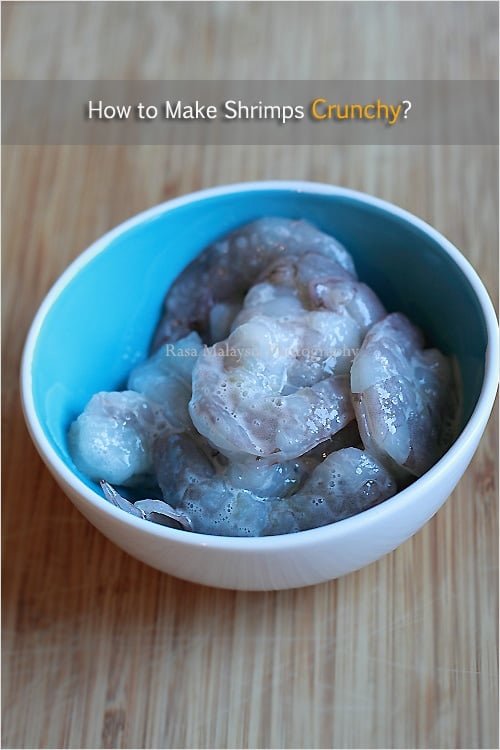
How do you make shrimp crunchy? More precisely, how do you make shrimp Chinese-restaurant-crunchy?
I’ve been obsessed with this subject matter for the longest time–a topic that took me a while to research. If you’ve tried dim sum or shrimp dishes in Chinese restaurants, you know exactly what I mean–shrimp so crunchy they give a mouth feel that they “bounce” in your mouth as you sink your teeth into the firm flesh. In Chinese, it’s called 爽脆 (shuangcui).
Great Chinese food is all about texture and mouth feel (口感) of everyday ingredients, the most basic skill that a good Chinese chef should acquire.
My uncle in Hong Kong is a huge connoisseur and a fantastic cook; he taught me the secret technique which he learned from a Cantonese top chef in Hong Kong–water.
Yes, cold running water to rinse shrimp (up to hours) until the flesh firms up and becomes translucent. I have later confirmed this technique with a few kitchen workers in Chinese restaurants, and yes, it’s true…(learn the secret technique of making shrimp crunchy after the jump)
I tried the cold running water technique at home and it works. However, it’s not ideal for home cooking because too much water is wasted during the treatment process. I resolved to research further for an alternative method best for home cooks.
When I was in Beijing this June, I chanced upon a great Chinese cookbook with the best step-by-step picture guide of making har gow or shrimp dumplings.
It reveals that a pH9 alkaline water is the secret behind crunchy shrimp, and a light massage while marinating pretty much does the trick. The PH9 clue intrigues me.
I came back and went to my favorite Chinese restaurant in Irvine and investigated further. The chef told me that they don’t use alkaline water, but swear by the process of marinating shrimp with egg white, tapioca starch (菱粉) and baking soda, a process they called “上浆” (shangjiang) or literally “coating with starch.”
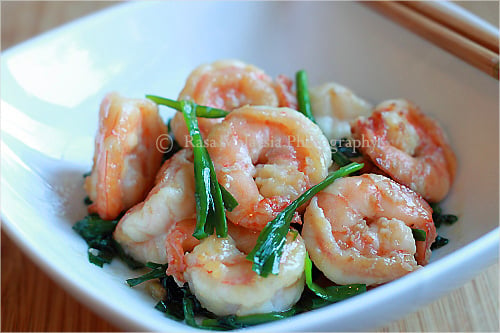
I researched further about pH9–which is a scientific measure of the acidity of a solution. Anything that is more than pH7 is alkaline. I found out that tap water–depending on its source, origin, or location–is usually close to pH9, which explains the reason why cold running water is used by Cantonese chefs.
Sea water is pH8 and the reason why live/raw shrimps have firm and crunchy flesh. I also learned that baking soda and egg white are both pH8. At that point, everything becomes crystal clear to me.
So, here it is, the technique that you’ve been waiting for–a well-protected “trade secret” used by Chinese and Cantonese chefs to treat their shrimp, which I have adapted and modified for home use.
I’ve tested it many times in my kitchen and it never fails me. I made my shrimp and chive dumplings with texture exactly like the ones served at dim sum restaurants.
I made a stir-fry shrimp dish and the shrimp bounced in my mouth and “crunched” as I bit into the flesh. This technique works like a miracle!
If you know another technique that works well, please share with me via comments! Otherwise, try my method below and you will be serving jumpy, bouncy, and crunchy shrimp in no time!
.
BRAGGING RIGHTS AND SELF PROMOTION
I am on Saveur’s “Sites We Love” at number 27, right after the big wigs such Apartment Therapy’s The Kitchn, Gourmet, and Culinate!! Thanks to the team at Saveur, I love you guys!!
I am also one of the “55+ Foodies to follow on Twitter” on Mashable. Go Rasa Malaysia!
Frequently Asked Questions
This recipe is only 117 calories per serving.
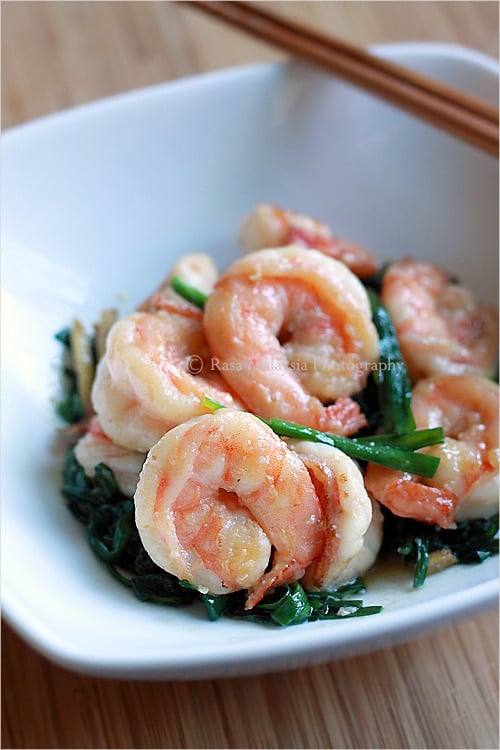
What To Serve With Crunchy Shrimp
For a wholesome meal and easy weeknight dinner, I recommend the following recipes.
I hope you enjoy this post as much as I do. If you try my recipe, please leave a comment and consider giving it a 5-star rating. For more easy and delicious recipes, explore my Recipe Index, and stay updated by subscribing to my newsletter and following me on Facebook, Pinterest, and Instagram for new updates.

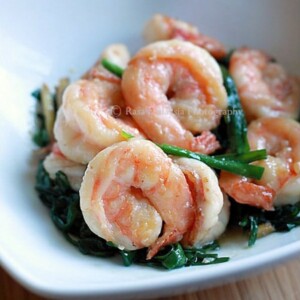
Crunchy Shrimp
Ingredients
- 1 lb (500g) shrimp, peeled and deveined
- 1 tablespoon egg white
- 1 1/2 teaspoons tapioca starch, 菱粉
- 1 tablespoon baking soda
Instructions
- Peel the shrimp, slit the back, and remove the veins. Transfer the shrimp to a large deep bowl and add ice-cold water from your fridge (or regular tap water with some ice cubes). Ensure the shrimp are fully submerged in the water.
- Add 1 heaping tablespoon of baking soda to the bowl and lightly massage the shrimp in the baking soda water. Set aside for 30 minutes.
- Rinse the shrimp thoroughly under cold running water and pat them dry with paper towels. By now, the shrimp should appear somewhat translucent.
- Add the egg white and tapioca starch to the shrimp. Use your hands to blend well while lightly massaging the shrimp.
- Cover the shrimp with plastic wrap and marinate overnight. Cook the shrimp without rinsing off the marinade.
Notes
Nutrition
Nutrition information is automatically calculated, so should only be used as an approximation.
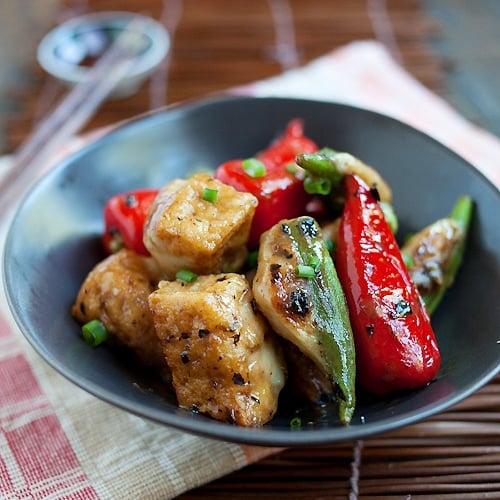
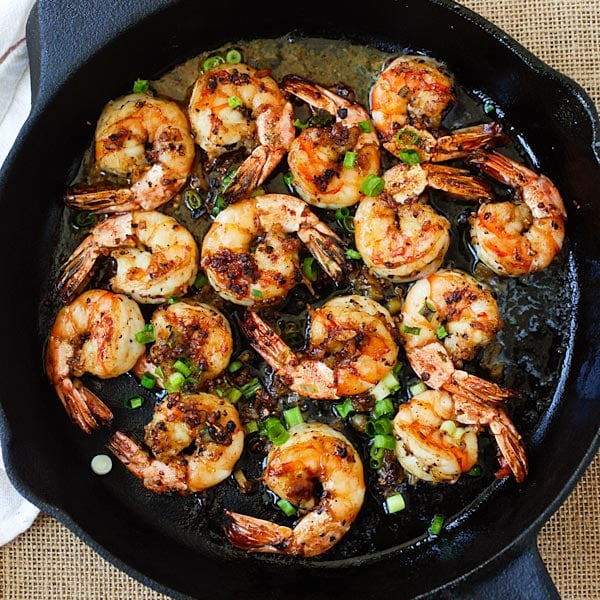
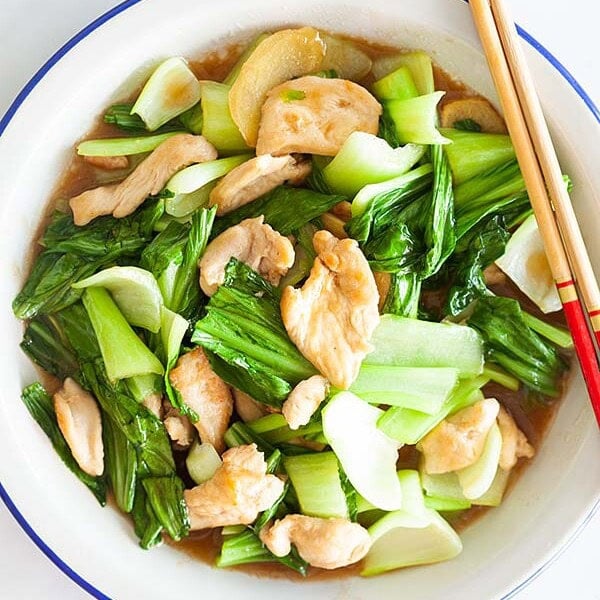
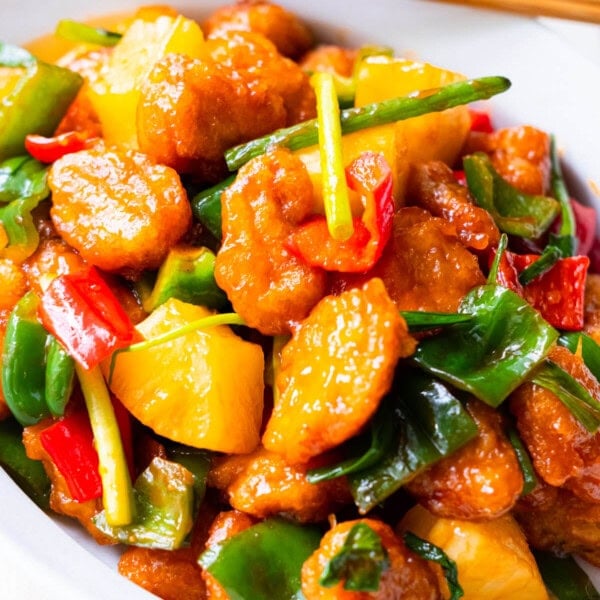






Hi Bee,
Thanks for sharing the secret. May I know, if i want to do the cold prawns/shrimps salad. It will apply the same? So instead of stir-fry, I just boiled water the cook it for a short while?
Yes, rinse off the shrimp and then boil the shrimp. Then transfer cooked shrimp to cold water with ice cubes for cold bath.
Crunchy shrimp 🍤 another 😋 looks like i have a lot of work and fun for the next few weeks thank you Rasa John from Belgium 🇧🇪
Hi John, thanks for trying my recipe and for the 5 star rating!
So the secret is not really a secret at all. You are correct that sea water is about 8PH, however, fresh water is usually about 7 it can go to 8 I guess but 40 years in the aquarium hobby, I’ve never seen it. I can’t imagine any restaurant running water for hours as the bill for that would be very high. The baking soda is the answer though. Just a 1/4 tsp. Of it in a glass of water will immediately take 7PH water to 9, I would think an ice water bath in this would do the trick. I may try this over the weekend. :)
Awesome!